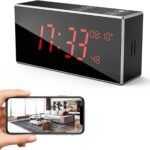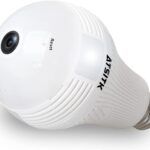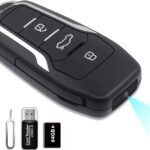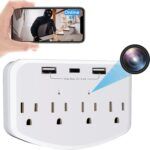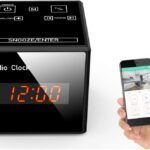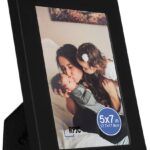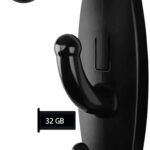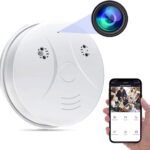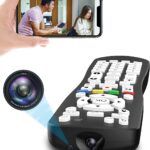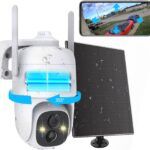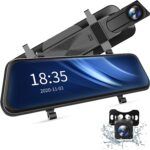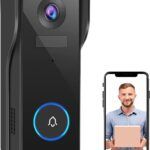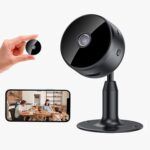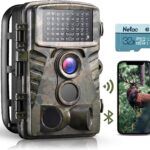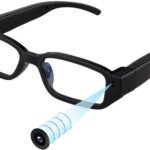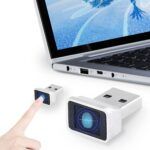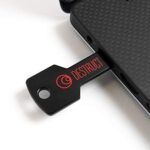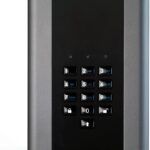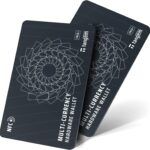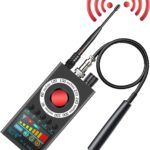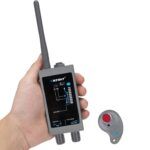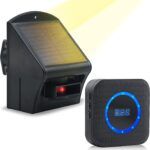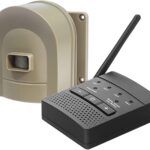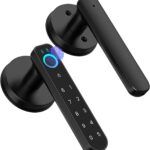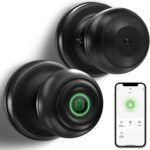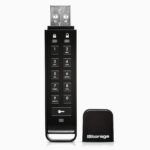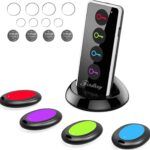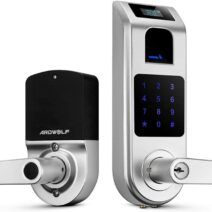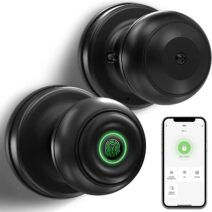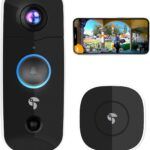- How do smart locks work?
Smart locks work by using wireless technology, such as Bluetooth or Wi-Fi, to communicate with a user’s smartphone or other authorized devices. This allows the user to remotely lock or unlock their door, monitor access, and receive notifications on their phone. Some smart locks also offer features such as voice control, geofencing, and time-based access.
In addition to wireless communication, most smart door locks use various means of biometric authentication, such as a password, fingerprint, or facial recognition, to ensure only authorized individuals can gain access to the lock. Some locks can also integrate with other smart home devices, such as security cameras or thermostats, to offer a more comprehensive home automation solution.
- Are smart locks secure?
Smart locks are designed to provide a convenient and secure way to access your home or business. However, just like any technology, smart locks can have vulnerabilities that may be exploited by hackers or intruders. It’s important to choose a product that has been thoroughly tested and certified by reputable security organizations.
One of the main benefits of smart locks is that they offer several security features that traditional locks don’t. For instance, most of these devices use advanced encryption protocols to secure the data transmitted between the lock and the smartphone app. Additionally, many smart door locks are equipped with sensors that can detect when someone is trying to tamper with the lock. Some locks even have built-in alarms that can sound when someone tries to force it open.
Smart locks can be a secure and reliable way to control access to your home or business, but it’s important to do your research and choose a lock that has a strong security track record.
- Can smart locks be hacked?
As with any technology, there is always a possibility of a smart lock being hacked. However, reputable smart lock manufacturers employ strong encryption algorithms and security protocols to protect against unauthorized access. Additionally, many smart locks also have built-in tamper alarms that will alert you to any suspicious activity. It is important to always use strong passwords and enable two-factor authentication to further enhance the security of your door lock.
One potential vulnerability to keep in mind is the possibility of someone cloning your key fob or smartphone access. To minimize this risk, it is important to keep your smart lock’s access credentials secure and never share them with anyone. Regularly updating your lock’s firmware and maintaining good cyber hygiene habits such as avoiding public Wi-Fi networks can also help to protect against potential hacking attempts.
Considering all the security features, smart locks are always going to be harder to ‘hack’ compared to traditional door locks.
- Do smart locks work with Google Home or Alexa?
Smart locks have become increasingly popular in recent years, and one of the reasons is that they can be integrated with various smart home systems. Many smart lock brands, such as August and Schlage, work with popular voice assistants like Google Home or Alexa. This means that you can control your smart lock with voice commands, like “Alexa, lock the front door” or “Hey Google, unlock the back door.”
To use your smart lock with Google Home or Alexa, you typically need to connect it to your home’s Wi-Fi network and enable the smart home skill or action for your lock brand within the voice assistant app. Once set up, you can control your lock with voice commands or through the respective app on your smartphone or tablet. Keep in mind that certain features may be limited when using voice commands, such as unlocking your door without a secure PIN or code.
- Do smart locks work with Apple HomeKit?
Many smart locks are compatible with Apple HomeKit, which allows you to control your smart lock through the Home app on your iPhone, iPad, or Apple Watch. With HomeKit integration, you can use Siri voice commands to lock and unlock your door, as well as create custom scenes and automation rules.
However, it’s important to note that not all smart locks work with Apple HomeKit, so you should check the compatibility before purchasing a smart door lock if you plan to use it with your Apple devices. Additionally, some smart locks may require a separate HomeKit-enabled hub or bridge for integration, so be sure to research the specific requirements for your chosen smart lock model.
- How to install a smart door lock?
Installing a smart lock is a fairly simple process and can usually be done with basic tools. The first step is to remove the existing lock from the door and make sure the area is clean and free of any debris. Next, the smart lock is installed using the included screws and mounting plate. The lock is then connected to the home’s Wi-Fi network and paired with a smartphone app to manage access.
It is important to follow the manufacturer’s instructions carefully to ensure that the smart lock is properly installed and functioning. Some smart locks may require additional steps such as installing a separate hub or bridge to connect to the home’s Wi-Fi network. It is also recommended to test the lock’s functionality before fully relying on it for security purposes. Overall, the installation process for a smart lock is typically straightforward and not much different compared to changing a regular door handle or door knob.
- Can I still use a key with a smart lock?
Most smart door locks come with a key backup option, so you can still use a traditional key to unlock the door in case of a dead battery or malfunction. Some smart locks even allow you to use your existing key to operate the lock, making the transition to a smart one even easier. Additionally, many smart locks offer a variety of entry options such as a numeric code or a mobile app, giving you more flexibility in accessing your home. Smart locks are designed for added convenience and security, without completely eliminating the traditional key option.
- Can I control smart locks with my phone?
Most smart locks can be controlled with a smartphone through a dedicated mobile app provided by the manufacturer. These apps typically allow users to lock and unlock the door remotely, grant access to others, view the lock’s activity log, and customize settings. Smart locks can be connected to a Wi-Fi or Bluetooth network, depending on the lock’s specifications, to enable remote access.
With the use of a mobile app, users can also receive notifications about lock activities such as when the door is unlocked or when someone enters the house. This feature is useful for monitoring household members, including children, elderly relatives, or house cleaners, and for keeping track of visitors or guests. Some smart locks also work with voice assistants such as Alexa or Google Assistant, allowing users to control the lock with voice commands.
- Do smart locks work with existing deadbolts?
Smart locks can work with existing deadbolts, depending on the model and manufacturer. Some smart locks are designed to completely replace the existing deadbolt, while others can be installed on top of the existing deadbolt. If you want to keep your current deadbolt and use a smart lock, make sure to choose a model that is compatible with your existing lock.
Additionally, some smart lock manufacturers provide adapters and retrofit kits that can convert your traditional lock into a smart one. These kits allow you to keep your existing deadbolt and just add the smart features. Make sure to check the manufacturer’s website or user manual for compatibility and installation instructions before purchasing.
- Can I set up guest access with a smart lock?
Most smart locks come with a feature that allows you to set up temporary access codes for guests or visitors. The exact process for setting up guest access can vary depending on the specific digital smart lock you have, but generally, it involves creating a one-time use or a temporary code and assigning it to a specific guest. Once the guest uses the code to unlock the door, the code will expire, and they will no longer have access. Or, you can choose to expire their code manually at any time.
Many smart locks also allow you to control guest access remotely, using a mobile app or web interface. This means that you can grant access to your home even when you’re not there physically. Additionally, some smart locks allow you to set restrictions on guest access, such as restricting access to certain days or times, or limiting the number of times the guest can use the code. For example, if your house cleaner always comes on Mondays, you can have a special code assigned to them which will only work on those days of the week, ensuring they can’t access your home in other days.
By using these features, you can ensure that your home stays secure while also providing convenient access to trusted guests. Best thing is that this all works through your smartphone and you can be at work or traveling halfway around the world.
- Are smart locks compatible with Z-Wave?
Many smart locks are compatible with Z-Wave, a wireless technology used for home automation. Z-Wave allows devices to communicate with each other, and with a central hub or controller, providing greater flexibility and control over your smart home devices.
If you have a Z-Wave hub or controller, you can look for smart locks that are compatible with Z-Wave and connect them to your existing system. This can allow you to control your smart lock along with other Z-Wave devices in your home using a single app. Keep in mind that some smart locks may require a specific Z-Wave module or bridge in order to work with your Z-Wave system.
- Do all smart locks require a Wi-Fi connection?
Not all smart locks require a Wi-Fi connection. Some smart locks use Bluetooth or Z-Wave technology to connect to your phone or other smart devices. Bluetooth-enabled smart locks typically have a shorter range than Wi-Fi-enabled locks, but they don’t require an internet connection, making them more secure. Z-Wave-enabled locks require a hub or bridge to connect to your home network, but they consume less power and are less susceptible to interference than Wi-Fi-enabled locks.
That being said, smart locks that connect to Wi-Fi offer more convenience and remote access. With a Wi-Fi-enabled smart lock, you can control the lock from anywhere in the world using your smartphone, as long as you have an internet connection. Additionally, some smart door handles are compatible with voice assistants like Amazon Alexa and Google Assistant, allowing you to control the lock with your voice commands.
- Can I remotely lock and unlock my door with a smart lock?
Most smart locks can be remotely locked and unlocked using a smartphone app or a voice assistant. The remote access feature allows you to control your smart lock from anywhere, as long as you have an internet connection. This feature can be particularly useful if you need to let someone into your home when you are not there, such as a family member or a trusted contractor.
To remotely lock and unlock your smart lock, you need to have it connected to a Wi-Fi network or a smart home hub that is connected to the internet. Once connected, you can use the smartphone app or the voice assistant to control your smart lock. You can also set up notifications to receive alerts when someone locks or unlocks the door, which can give you added peace of mind when you are away from home.
- Are smart locks weather-resistant?
Smart locks are designed to be used outdoors, but not all smart locks are weather-resistant. Some models are specifically built to withstand harsh weather conditions, such as heavy rain, snow, and extreme temperatures. These models often have an IP rating, which indicates the level of protection they provide against dust and water. For example, a lock with an IP65 rating is highly resistant to dust and water and can withstand heavy rain and snow.
It’s important to note that while a smart lock may be weather-resistant, it’s still important to take care of it properly to ensure it remains in good working condition. This may include periodic maintenance, such as cleaning the lock and ensuring it’s properly lubricated, as well as making sure it’s securely mounted and protected from extreme weather conditions.
- Can I see a history of entries and exits with a smart lock?
Most smart locks come with a companion app that allows you to see a log of lock activity. The app provides information such as who locked or unlocked the door and at what time. Some smart locks also allow you to set up remote alerts for specific events, such as when the door is unlocked or a certain user code is entered. This feature can be particularly useful for parents who want to keep track of when their kids arrive home from school or for Airbnb hosts who want to monitor their guests’ access to the property. Having a log of lock activity can give you greater peace of mind and control over who has access to your home or property.
- Do smart locks have an auto-lock feature?
Most smart locks come with an auto-lock feature that automatically locks the door after a certain amount of time has passed. This can be a useful feature for those who are forgetful or want to ensure that their door is always locked, even if they forget to do so manually.
Some smart locks even have customizable auto-lock settings, allowing users to choose how long the lock waits before automatically locking. Additionally, some locks may also have an auto-unlock feature, which can automatically unlock the door as the user approaches the lock, based on their phone’s Bluetooth signal. However, it is important to note that these features may require additional setup and can vary depending on the specific smart lock model.
- Are smart door locks easy to use?
Smart door locks are designed to make your life easier, not harder. These locks can be very user-friendly and easy to use even for those who are not tech-savvy.
Most smart lock systems have simple interfaces and are designed to be intuitive, allowing for straightforward installation and operation. Many can also be controlled through mobile apps, which are often user-friendly and allow for easy access to lock controls and settings.
Additionally, some smart locks also offer voice control through digital assistants such as Amazon Alexa and Google Assistant, making it easy for users to control their locks through simple voice commands. Overall, with the right smart lock system and a little bit of initial setup, even those who are not tech-savvy can benefit from the convenience and security of smart locks.
- How do I fix my smart lock if it's not working?
If your smart lock isn’t working, there are a few things you can do to try and fix the issue. First, check that the lock has power and that the batteries are charged or replaced if needed. Then, ensure that the smart handle or smart door knob is properly installed and calibrated according to the manufacturer’s instructions. If the lock still isn’t working, try resetting it to its default settings and reprogramming it from scratch.
If none of these solutions work, it’s possible that there is a more significant issue with the lock that requires professional assistance. In this case, contact the manufacturer or a professional locksmith for further guidance and support. Remember to always follow the instructions provided by the manufacturer to ensure safe and proper use of your smart lock.
- What happens to my smart lock if battery goes out?
If your smart lock’s battery dies, you may not be able to operate it via the smart lock app or keypad, but you can still use your physical key to unlock the door. It is recommended to replace the batteries as soon as possible to avoid any inconvenience. Most smart locks have a low-battery warning feature that alerts you when the battery is running low, giving you enough time to replace them before they die completely.
Additionally, many smart locks also have USB cable support for emergency power, allowing you to quickly recharge them with a mobile power bank, or plug them into a wall outlet for a power source.
It’s important to note that even if the battery dies or the smart lock malfunctions, the lock’s mechanical parts will continue to function, allowing you to unlock your door with a key. However, it’s always better to have a backup plan, such as keeping spare batteries on hand, to avoid any potential problems with your smart lock.
Upgrade your home security with a smart door lock. Say goodbye to fumbling with keys or worrying about lost copies. With a smart door lock, you can control access to your home from your phone, get alerts when someone enters, and even create temporary codes for guests or deliveries. Don’t compromise on your safety and choose a smart lock.
Showing all 3 products:

Ardwolf Fingerprint Door Lock
$109.99
Duziro Biometric Fingerprint Door Lock
$79.99
GeekTale Smart Door Knob
$99.99
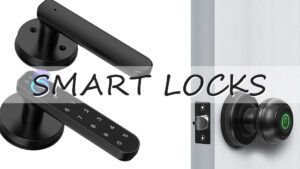
Smart door locks are the latest innovation in home security, offering convenience and peace of mind to homeowners. These locks can be controlled remotely through a smartphone app, allowing you to grant access to guests or service providers without the need for physical keys. With a variety of features such as biometric authentication, automatic locking, and integration with smart home systems, smart locks provide an additional layer of security to your home while simplifying your daily routine.
Smart Door Locks FAQ
Consider upgrading your home security with Doorbell Cameras too!
Smart door locks offer a convenient and secure way to access your home without using traditional keys. With their easy-to-use interfaces, compatibility with virtual assistants, and smartphone apps, smart locks have become an increasingly popular choice for homeowners looking to upgrade their home security.
It’s important to research the different types of smart locks available to ensure that you choose the best option for your needs and budget. Whether you’re looking for a basic smart lock with remote access or a more advanced option with keyless entry and advanced security features, there is always a smart lock available to meet your needs.

